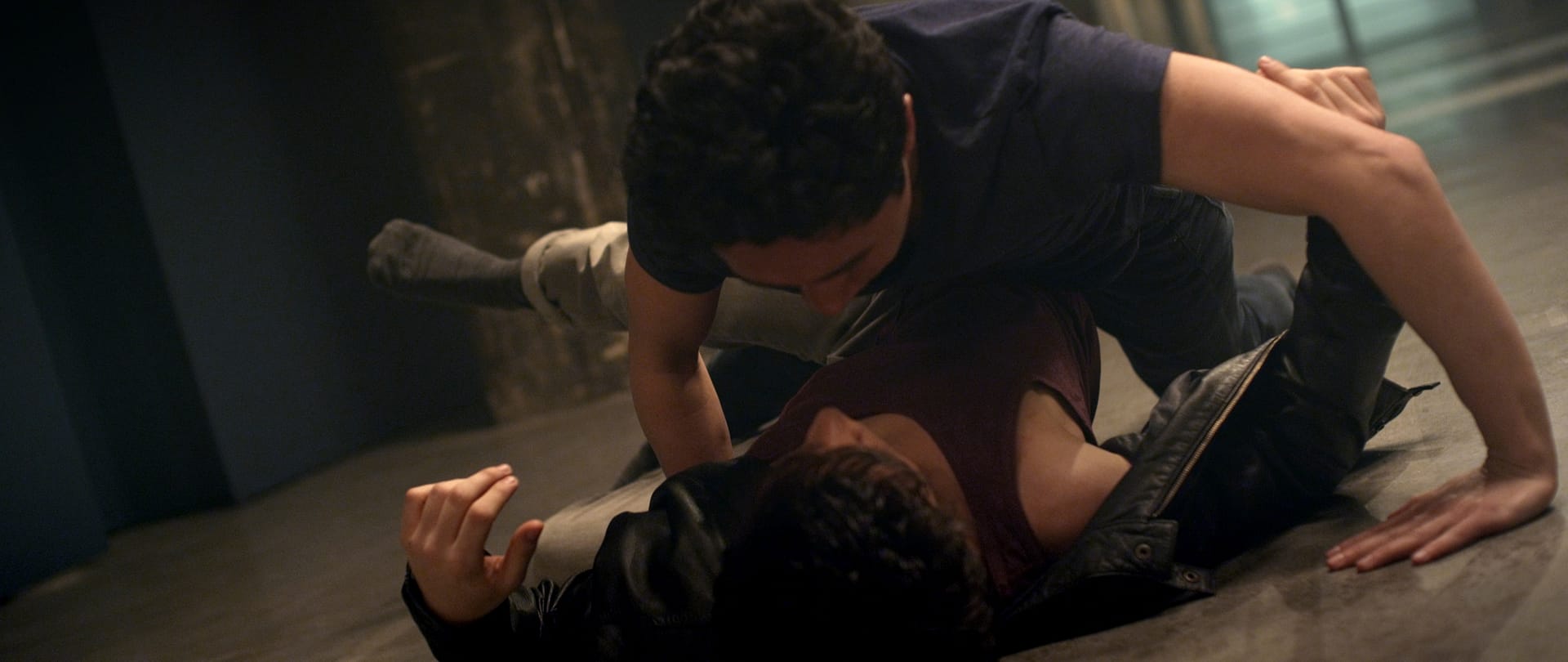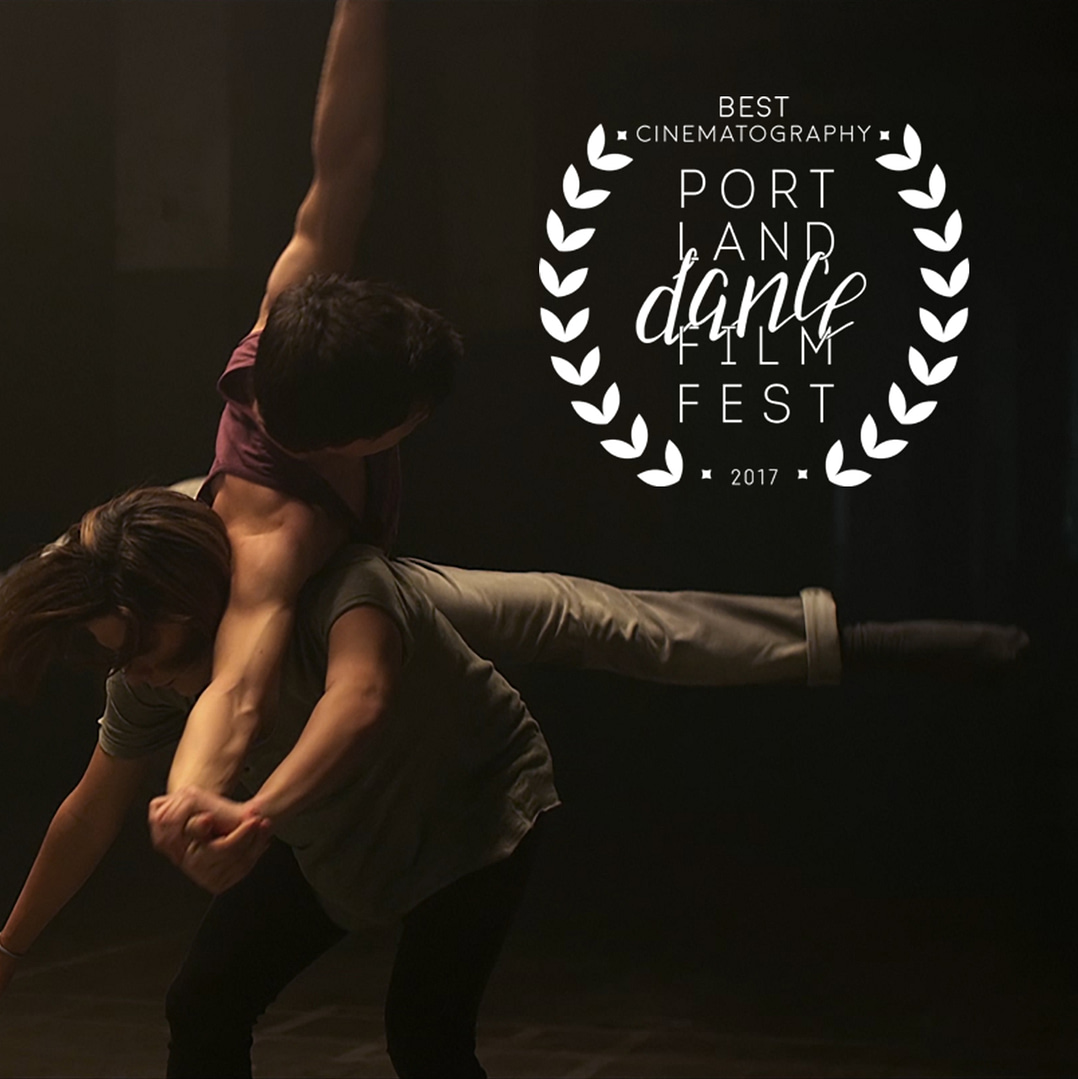


Intrinsic Moral Evil
Directed by Harm Weistra
Director of Photography Jorrit Garretsen
Choreographer Fernando Domínguez Rincón
Dancers Joan Ferré Gomez, Jorge Guillen Ortiz, Frago Peña Gonzalez
Composer Ludwig van Beethoven
Editor Michiel Boesveldt
Intrinsic Moral Evil seems to be a tale of identity and coming of age. But above all, the three dancers play with the viewer’s perception and expectations: is it a memory, a dream, a search for identity? Is it about losing friendship or about growing up? The layered story gradually develops; revealing its ultimate secret just before the end credits start. Inviting the audience to make its own interpretation.
Interview with Director Harm Weistra
Some background information about Harm Weistra.
I’m not educated as a filmmaker nor as a dancer/choreographer. I hold a Bachelor of Fine Arts; graduated in 2011; second career. As an artist I choose the medium that best fits to tell my story. Dance and/or dance film I use among other forms of artistic expression.
Describe, in as many or as few words as you see fit, the genesis of or inspiration behind Intrinsic Moral Evil?
It all started with an observation in spring 2012. The first beautiful spring day. That Friday afternoon, love was in the air at the railway station where I was waiting for my train. Students going home for the weekend had to say goodbye to their lovers. It made bystanders smile. Except for one couple, being two young boys. At best, people tried to look neutral. But these boy’s encountered quite some disapproval. Being gay myself, I know that this is what one can expect. But after all those years, it still shocks me. I didn’t get it out of my mind, so I wondered if I could translate this experience into art. That brought me the idea of playing with the
perception of my audience. Basically that is what Intrinsic Moral Evil does. It plays with the perception, meant to invite the audience to contemplate on these issues.
How long did Intrinsic Moral Evil take to film? How long was post-production?
When you’ve watched my film, you probably understand that it was quite a challenge to find one particular dancer. That took half a year. Once we had our dancer, it took me half a year to write the script, discuss it with my choreographer and to find the rest of the cast and a professional film crew.
My choreographer and I developed the dance during a three week improvisation and rehearsal with the three dancers. A week later we had a two day shooting. At the end we shot almost 7 hours of footage; recording the dance from multiple angles, slow motion as well as actual speed. By the way, we only used one camera (RED Epic).
I was lucky to work with an incredible crew. After I had analyzed and described all of the footage, my editor only needed one day to make a first version. And I was flabbergasted. After this version, the editor and I worked three times a whole day, to refine the first draft. After each session, I reviewed the next version and tried to find better, more compelling shots where
possible.
The biggest challenge was the sound track. Because initially I wanted to use music from the first second, we didn’t record actual sound. Only after working with 3 composers, I realized that the first part of the film would be better off without music. For a simple reason: music directs the emotions of the viewer. That’s what I wanted to achieve with the Beethoven Sonata. But for the first part of the film, I wanted the audience to decide where their emotions should go. The “actual sound” of the first part has partly been made by a foley artist and by one of the dancers and the choreographer (who is a dancer as well).
The post-production took 10 months. That’s partly because making this film was for me a crash course film making and partly because my executive producer me for a heavily reduced fee, what meant that I only could use his spare time. Sound design, grading, for me this all was new. Didn’t even know the terms, let it be what it meant.
During these 10 month I furthermore had to decide if I needed some guiding voice-over, what that should be and what kind of voice I needed. That process is a story of its own 🙂
If this is your first dance for film production, what are a few things you learned about making a dance for film that surprised you? If this is not your first dance for film production, what are a few things that you are continually trying to refine or learn as you have sought to work thru this medium of dance and film together?
Actually, this was my first real dance film. Three years before – during graduation for art school – I made Damaged Goods, what you could call a dance video, 3 minutes, 30 seconds. Totally different process and approach: 2 dance students, cameraman/editor/post-production being the same person. No choreographer, working with the dancers myself. More “arty” less
“traditional” film for a big screen.
What I realized and learned with hindsight, the only reason why I as a totally inexperienced film maker could make this film, was because of the fact that I had a very clear idea what I wanted to achieve. I wanted to play with the perception of the audience, hoping they would reconsider their possible prejudices. That was my guiding principle. So any unexpected situation I came across – and there were a lot – I could judge against this principle. That means that each time I only had to answer one question: does it strengthen what I want to achieve or weakening it. To give one example, I initially had the idea to make a pas-de-deux. During the audition for the leading male dancer, we formed couples to find out how skilled they are in dancing close to another dancer. I then realized that starting with two boys and suggesting that at least one of them fancied the other, would add an extra layer of perception to my film. This is just one example of many. From choreography, to selecting the dancers and making a final editing and sounds design, I was helped and advised heavily by my crew, the executive producer in particular, but at the end, I always was able to be in the lead and decide what would work best thanks to this clear focus where I was heading for.
Furthermore what I realized after the film was ready, is the huge possible benefit of dance film above standard narrative films. I had a conversation with a US university professor who had watched my film. And we concluded that the advantage of telling a story with dance, is that there is no or hardly any spoken word that’s unidirectional guiding the audience. What means
that the audience has a much bigger role in deciding and deciphering what’s going on, what’s the “message” of the interaction between the dancers, what this means for them, and how this affects them. This professor had watched my film with her students, as one of the films in a LGBT-program. She told me that Intrinsic Moral Evil was the film her students talked about most easily and the film that evoked the most lively discussion among her students.
What is interesting or intriguing to you about dance for film vs. dance for stage? Or, if you are coming from a film background and working with dance is a more new medium for you, what drew you to wanting to capture and work with dance?
Dance for stage almost by definition means, that one has to work with big gestures. Subtle emotions are difficult, because the dancers have to reach the back row as well. With film – where the camera can shoot near the dancers, close on their skin – it’s much easier to capture small and subtle emotions and movements. As said, for me making this film was a crash course. So I’m still learning and trying to figure out what film and what technology can mean for my practice as an artists. For a next (dance)film, I probably will go back to one of the aspects of Damaged Goods my graduation dance film. For that film, we didn’t make a linear choreography, as we did for Intrinsic Moral Evil. For Damaged Goods, I asked the dancers to express a set of various emotions. In the editing we combined these mini choreographies into the choreography that’s constitutes the film. For Intrinsic Moral Evil I only partly used this technique, by skipping parts of the base choreography and by slightly changing order.
One of the challenging and (hopefully) interesting ideas I have, is to make a dance film without working with dancers. Dance film is about movement on screen. Movement can be found everywhere, orchestrated and spontaneously.
Are there any projects, dance film or otherwise, that you are working on currently that you would like to share with our audience?
Short answer: more ideas than money. Intrinsic Moral Evil, has been 100% funded by myself. At the end, it turned out that the film reduced my savings account with 40.000 euro’s. I’ll get problems at home, if I make the next film without external funding. Finding money is a challenge, as probably in every country.
2017 Winner Grand Jury Prize, In/Motion Dance Film Festival, Chicago (USA)
2017 Winner Audience Favourite, In/Motion Dance Film Festival, Chicago (USA)
2017 Winner Best Dance Film, New Renaissance Film Festival, Amsterdam (NL)
2016 Winner Award of Merit, Southern Shorts Awards, Roswell, GA (USA)
2016 Winner Best LGBT, Erie International Film Festival, Pennsylvania (USA)
2016 Winner Best LGBT Short, Queen City Film Festival, Cumberland, (USA) (USA)
2016 Winner Golden Cine Award, Headline International Film Festival (USA)
2016 Winner Award of Merit, International New York Film Festival, (USA)
2016 Winner Outstanding Excellence: Choreography, Depth of Field, Nassau, DE (USA)
2016 Winner Outstanding Excellence: Cinematography, Depth of Field, Nassau, DE (USA)
2016 Winner Outstanding Excellence: Editing, Depth of Field, Nassau, DE (USA)
2016 Winner Best Editing, Short to the Point, Bucharest (Romania)
2016 Winner Best Editing, Best Independent International Film Festival,
Karlsruhe (Germany)
2016 Winner Best LGBTQ Short, Paris Play Film Festival (France)
2016 Winner Best Score, OutlantaCon Short Film Festival, Georgia (USA)
2016 Winner In Our image Award, OutlantaCon Short Film Festival, Georgia (USA)
2015 Winner Audience’s Choice Award at Queer Shots Munich 2015 (Germany)
2015 Winner Best Editing at Eindhovens Film Festival, Eindhoven (Netherlands)
2015 Winner People’s Choice Award at PiGrecoZen, Ancona (Italy)
2015 Winner Best Director of Photography, Paris Art and Movie Awards (France)
2015 Winner Best International Short Film at MICGénero, Benito Juaréz, Mexico)
2015 Winner Best LGBT Short at Cannes Short Film Festival (France)
2015 Winner Best Art/Experimental Film at Sunderland Short Film Festival
(UK)
2015 Winner Best Dutch Short Film at Roze Filmdagen, Amsterdam (Netherlands)
2015 Winner Audience Award at Loikka Dance Film Festival, Helsinki (Finland)
2014 Winner Best Experimental Short at festival aGLIFF Austin, Texas (USA)
2014 Winner Mexican First National Screendance Award at Agite y Sirva –
Screendance Touring Festival, Mexico